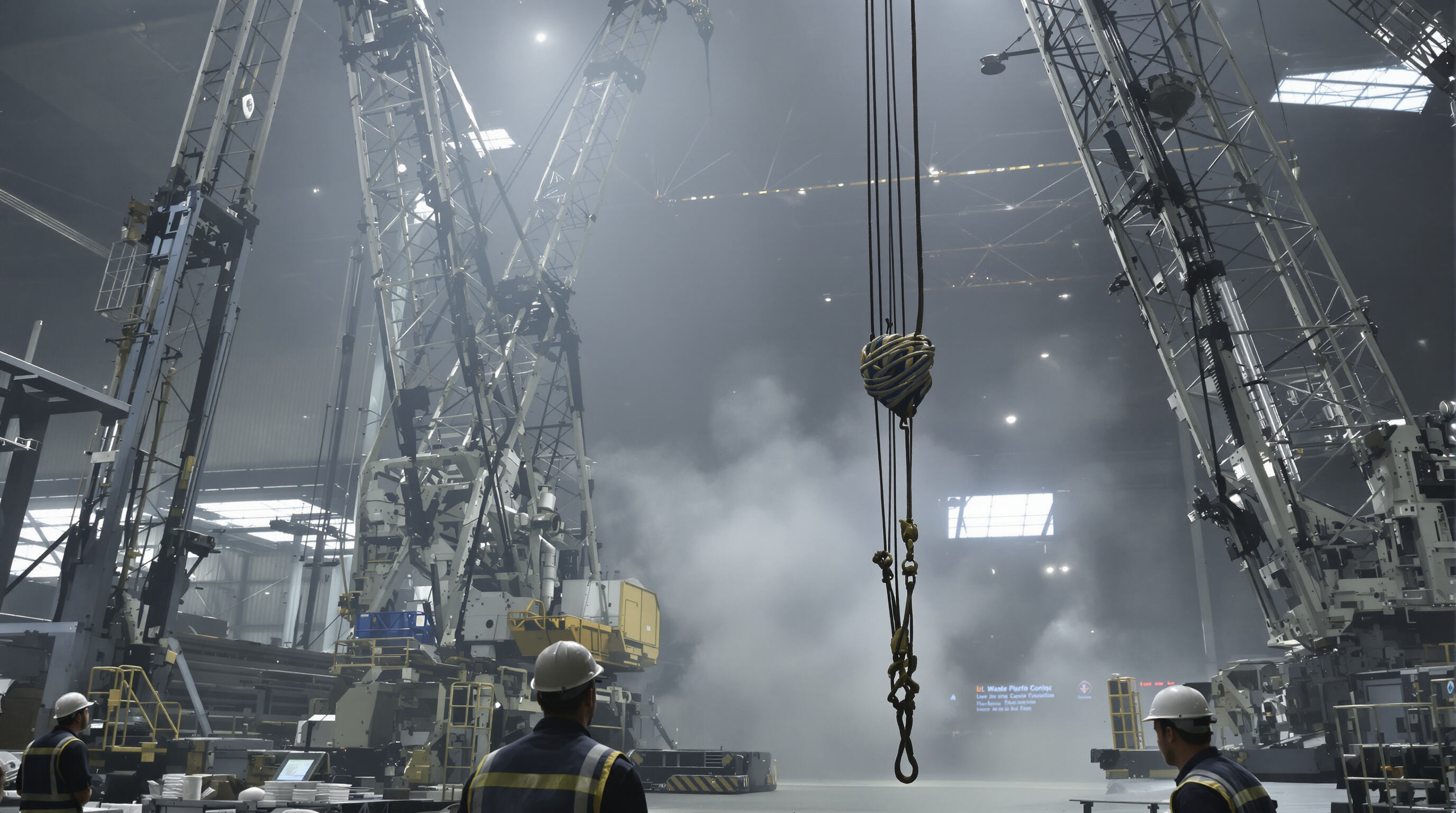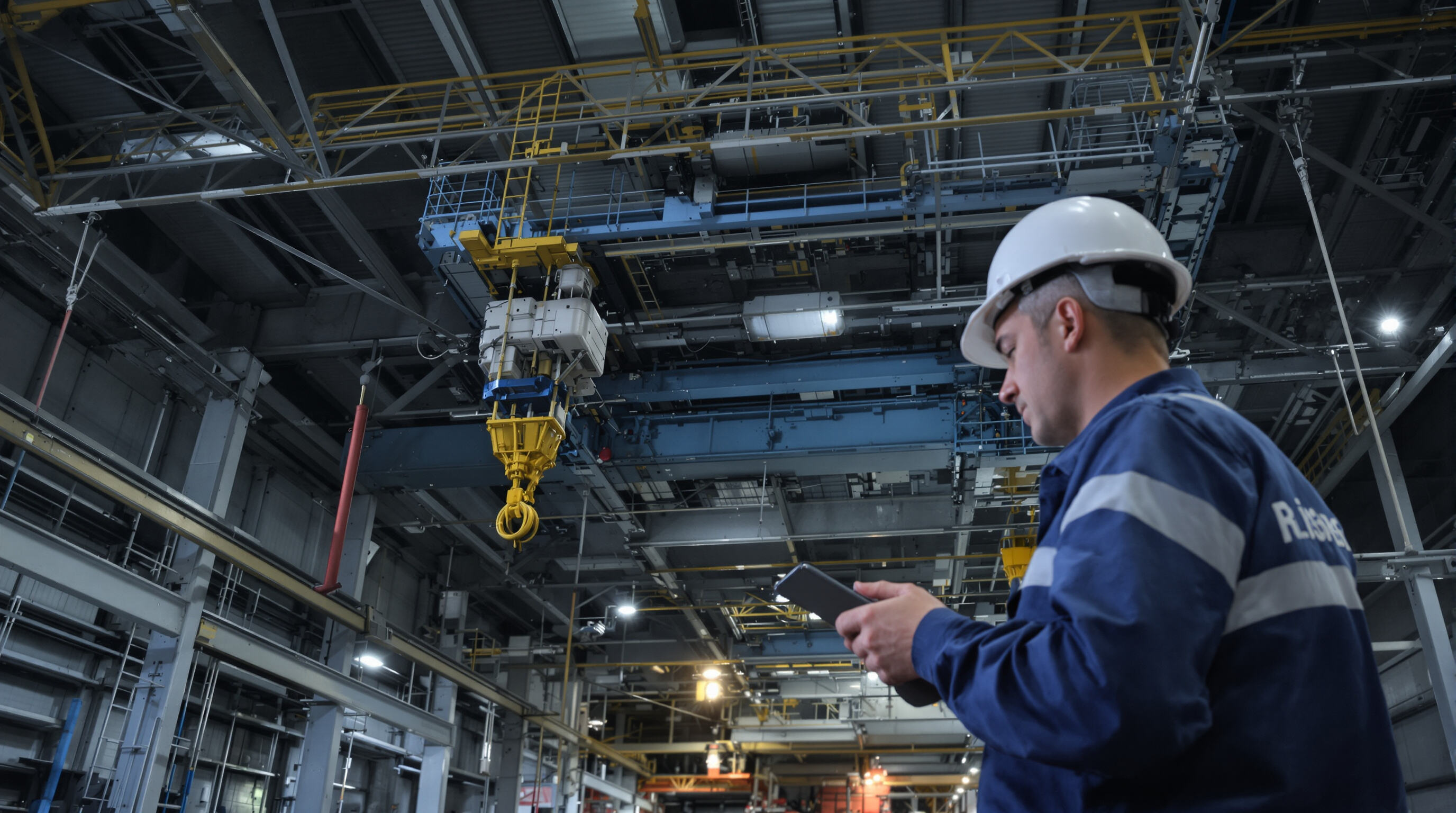Understanding Gantry and Overhead Cranes: Types, Uses, and Design
Key Differences Between Gantry and Overhead Cranes
Gantry cranes run along rails or wheels at ground level, giving them the kind of mobility that works great outdoors or for short term setups. These differ from overhead cranes that need those fixed ceiling tracks. Gantry systems don't actually require any special building support, so they fit right into places like construction sites, shipyards, and train maintenance areas. Overhead cranes work best inside factories and warehouses though. They make good use of vertical space and can move really heavy stuff around pretty well. Some models can lift as much as 500 tons according to ASME standards from 2023.
Common Industrial Applications of Gantry and Overhead Cranes
- Gantry cranes: Widely used in shipbuilding, railway maintenance, and steel mill slab handling
- Overhead cranes: Essential in automotive assembly lines, warehouse palletizing, and foundry ladle transfers
According to a 2024 Material Handling Report, 68% of automotive plants utilize double-girder overhead cranes for precision engine hoisting, highlighting their role in high-accuracy manufacturing processes.
Load Capacity and Structural Design Considerations
Most single girder gantry cranes handle weights around 20 tons max, working best when spans are between 15 and 30 meters long. Double girder systems take things further though, thanks to stronger end trucks and those solid box girders which let them tackle much heavier loads without breaking a sweat. Getting the runways aligned right matters a lot too. When they're off just slightly, rail wear kicks in fast sometimes over 2mm monthly damage that really cuts down on equipment lifespan. That's why smart engineers go for I beam designs and throw in some anti deflection tech. These additions keep everything stable across multiple axes while making sure these cranes last years longer than their basic counterparts.
Identifying Core Safety Hazards in Gantry and Overhead Crane Operations

Frequent Causes of Crane-Related Accidents in Manufacturing
In industrial environments, around three quarters of all crane accidents come down to overloading, mechanical issues, or problems with the surrounding environment. When it comes to structural failures specifically, almost 40% happen because workers either push beyond what the crane can handle or just plain forget to check how weights are distributed across different parts of the system. Then there's the issue of side loading combined with faulty rigging gear, which makes cranes rock back and forth dangerously. These swinging movements create serious risks not just for people working nearby but also for buildings and other expensive machinery located within range.
Risks of Mechanical Failure in Gantry and Overhead Cranes
Hoist mechanisms that have seen better days and bridge girders suffering from corrosion often lead to serious equipment failures. According to industry data from last year, around half (about 56%) of all mechanical problems can be traced back to poor upkeep of essential parts like wire ropes and brake systems. Structural issues become even more concerning when looking at older equipment. Runway beams showing signs of fatigue cracking combined with end trucks that aren't properly aligned pose real risks, especially for cranes that keep running past their intended 10 year lifespan. These factors together create conditions where unexpected breakdowns become much more likely.
Human Error and Operator Fatigue: A Leading Concern
Operators who are tired tend to break safety rules when handling lifts at least four times more than their well-rested counterparts. When someone has to split their focus between controlling what's being lifted and keeping track of where everything is around them, it leads to communication problems about 27% of the time. These mistakes frequently result in crashes or damaged materials. The problem gets worse when people aren't properly trained. Nearly half (around 41%) of newer operators don't even have proper certification for emergency stops. That leaves them particularly exposed when something goes wrong unexpectedly on site.
Environmental Factors Impacting Crane Safety
High winds reduce load control precision by 33% in outdoor gantry systems, while temperature fluctuations cause rail contraction issues in 19% of indoor overhead crane installations. Low visibility doubles the risk of blind-spot collisions, underscoring the need for IoT-enabled proximity sensors that provide real-time hazard alerts and improve situational awareness.
Regulatory Standards and Compliance for Safe Crane Operation
OSHA Guidelines for Safe Operation of Gantry and Overhead Cranes
OSHA has some pretty tough rules in place for workplace safety, specifically outlined in 29 CFR 1910.179. These regulations cover everything from how loads should be managed to regular equipment inspections and making sure operators are properly certified. Workers need to check those hoist brakes every day, make sure the limit switches work correctly, and look at all the other important parts that could fail if neglected. Companies that skip these checks risk getting hit with fines that can go well over $15k for each violation they miss. That kind of money adds up fast, which is why most employers take these requirements seriously despite the extra paperwork involved.
ASME B30.2 Standards for Overhead and Gantry Cranes
ASME B30.2 sets the rules for keeping cranes safe in both their design and day-to-day operation. The standard covers things like how much give there should be in components, what condition the wire ropes need to be in, and how often they must test the load capacity. Every year these machines have to go through load tests to make sure everything still holds up under stress. Paperwork from these tests is essential stuff when it comes time for inspections by regulators. Safety margins for moving loads are another key part of this standard. Basically, it makes sure that cranes don't snap or buckle when they're doing their job of lifting heavy objects around construction sites or factories, even when those objects start swinging side to side unexpectedly.
Importance of Routine Inspections and Documentation
Routine inspections form the foundation of effective crane safety programs. Pre-shift checks should evaluate:
- Lubrication levels in moving parts
- Cracks or deformation in load-bearing structures
- Functionality of emergency stop systems
Maintaining digital inspection logs improves audit efficiency—facilities using digitized records report 40% faster compliance reviews compared to paper-based systems.
Compliance Penalties and Legal Implications of Neglect
Not sticking to safety rules often brings serious trouble, from having to shut down operations completely to facing lawsuits. Take what happened last year at one factory where OSHA slapped them with a $740k fine after their crane fell apart because someone had done weld repairs without proper documentation. The money isn't the only issue either. When companies neglect these standards, they risk losing their insurance protection and damaging their good name in the industry. That's why getting ahead of compliance requirements makes sense legally speaking but also helps businesses avoid all sorts of headaches down the road.
Pre-Operation and In-Operation Safety Procedures for Gantry and Overhead Cranes
Daily Inspection Checklist and Operator Readiness
At the start of every shift, operators need to run through their standard 12 point check list looking at things like hook strength, the state of the wire ropes, and how well the brakes are working. According to some recent findings from OSHA back in 2023, nearly 4 out of 10 crane problems actually come down to small signs of wear that nobody noticed during these daily inspections. The operator also has to prove they're fit for work by passing tests for being sober and not too tired. This matters because when workers aren't thinking clearly, it accounts for about 27 percent of all lifting mishaps according to data from the Bureau of Labor Statistics in 2022. Keeping alert makes all the difference in safety outcomes.
Verifying Load Limits and Rigging Equipment Integrity
Before any lifting operation takes place, workers need to check if the crane's maximum rating matches what it will actually be lifting, including where the weight is centered. For safety reasons, non-destructive tests like magnetic particle inspection are commonly used to spot those tiny cracks that form in shackles and slings over time. These inspections really matter because according to recent data from the ASME B30.20 Committee Report in 2023, about 41 percent of all rigging failures happen when nobody noticed the metal was getting tired and weak from constant use. That kind of oversight can lead to serious accidents on site.
Best Practices for Lifting, Moving, and Controlling Loads
Implement a three-stage protocol for safe operation:
- Initial lift: Raise the load 6–8 inches to test balance
- Path clearance: Maintain at least 3 feet of horizontal clearance from obstacles
- Movement control: Limit travel speed to 50% of maximum in congested areas
Centroid-aligned lifting reduces swing risks by 63% compared to off-center hoisting (Crane Industry Council 2023), enhancing both safety and precision.
Communication Protocols Between Operators and Signal Persons
Standardized hand signals per ASME B30.2 minimize misinterpretation, with two-way radio backup required when visibility drops below 500 feet or the load exceeds 75% of capacity. A 2021 NIOSH study showed dual-communication systems reduce misalignment errors by 89% in high-noise environments.
Real-Time Monitoring and Emergency Shutdown Procedures
Modern crane systems use strain gauges and inertia sensors to trigger automatic shutdowns when thresholds are exceeded:
| Parameter | Safety Threshold |
|---|---|
| Lateral load swing | 15 degrees from vertical |
| Wind speed | 28 mph (25.3 knots) |
| Hydraulic pressure anomaly | ±12% from baseline |
Remote lockdown capabilities halt all motion within 1.2 seconds of emergency activation, meeting ISO 14118:2022 requirements.
Maintenance, Training, and Long-Term Safety Management

Scheduled Maintenance and Identifying Component Wear
Proactive maintenance reduces unplanned downtime by 25% in crane-dependent facilities (2023 industrial safety data). A tiered inspection approach ensures comprehensive oversight:
- Daily visual checks for cable wear, rail misalignment, or hydraulic leaks
- Monthly load testing to validate brake and hoist performance
- Annual structural audits evaluating weld quality and girder deflection
Asymmetric wear on trolley wheels or runway rails often indicates alignment issues or uneven loading, requiring immediate corrective action.
Upgrading Outdated Crane Systems for Enhanced Safety
Legacy crane systems are responsible for 38% of mechanical failures in material handling. Modern retrofits—including redundant limit switches, anti-collision sensors, and wireless load monitoring—can improve safety outcomes by up to 60%. Facilities should prioritize upgrades when:
- Control systems lack programmable logic controllers (PLCs)
- Load charts no longer reflect current operational needs
- Emergency stop response times exceed 0.5 seconds
Crane Operator Training and NCCCO Certification Requirements
Certified operators, as verified by the National Commission for the Certification of Crane Operators (NCCCO), experience 72% fewer safety incidents. Core training modules should include:
- Load dynamics and center-of-gravity calculations
- Awareness of overhead obstructions
- Wind speed thresholds for outdoor gantry operations
Virtual reality (VR) simulators enable hands-on practice for complex lifts without exposing workers to real-world hazards.
Evaluating Competency and Reducing Risk Through Recurrent Training
Quarterly skills assessments reduce human-error incidents by 41% across crane-intensive industries. Supervisors should monitor:
- Precision metrics: Ability to land loads within 2 inches of target zones
- Protocol adherence: Correct use of taglines and spreader bars
- Decision latency: Response time to abnormal load movements
Annual refresher courses aligned with ASME B30.2 standards ensure operators remain proficient in evolving safety practices and technological advancements.
FAQ Section
What are the main differences between gantry cranes and overhead cranes?
Gantry cranes run along ground-level rails or wheels, whereas overhead cranes operate using fixed ceiling tracks. Gantry cranes are suitable for outdoor use and temporary setups, while overhead cranes are ideal for indoor factory and warehouse applications.
What are the typical industrial applications of gantry and overhead cranes?
Gantry cranes are commonly used in shipbuilding, railway maintenance, and steel mill slab handling, whereas overhead cranes are essential in automotive assembly lines, warehouse palletizing, and foundry ladle transfers.
What are some common causes of crane-related accidents?
Common causes include overloading, mechanical issues, improper weight distribution, and environmental factors such as high winds and poor visibility.
How can crane safety be improved?
Crane safety can be improved through regular inspections, proper maintenance, upgrading outdated systems, maintaining communication protocols, and ensuring operator certifications and training.
What are the regulatory standards governing crane operations?
OSHA guidelines and ASME B30.2 standards are two key regulatory frameworks overseeing safe crane operations, covering load management, equipment inspections, and operator certification requirements.
Table of Contents
- Understanding Gantry and Overhead Cranes: Types, Uses, and Design
- Identifying Core Safety Hazards in Gantry and Overhead Crane Operations
- Regulatory Standards and Compliance for Safe Crane Operation
- Pre-Operation and In-Operation Safety Procedures for Gantry and Overhead Cranes
- Maintenance, Training, and Long-Term Safety Management
-
FAQ Section
- What are the main differences between gantry cranes and overhead cranes?
- What are the typical industrial applications of gantry and overhead cranes?
- What are some common causes of crane-related accidents?
- How can crane safety be improved?
- What are the regulatory standards governing crane operations?

